 W
WThe United States Department of Defense is an executive branch department of the federal government charged with coordinating and supervising all agencies and functions of the government directly related to national security and the United States Armed Forces. The DoD is the largest employer in the world, with nearly 1.3 million active-duty service members as of 2016. More employees include over 826,000 National Guard and reservists from the armed forces, and over 732,000 civilians bringing the total to over 2.8 million employees. Headquartered at the Pentagon in Arlington, Virginia, just outside Washington, D.C., the DoD's stated mission is to provide "the military forces needed to deter war and ensure our nation's security".
 W
WThe United States Department of Defense (DoD) has a complex organizational structure. It includes the Army, Navy, the Marine Corps, Air Force, Space Force, the Unified combatant commands, U.S. elements of multinational commands, as well as non-combat agencies such as the Defense Intelligence Agency and the National Security Agency. The DoD's annual budget was roughly US$496.1 billion in 2015. This figure is the base amount and does not include the $64.3 billion spent on "War/Non-War Supplementals". Including those items brings the total to $560.6 billion for 2015.
 W
WThe chain of command leads from the President through the Secretary of Defense down to the newest recruits. The United States armed forces are organized through the United States Department of Defense, which oversees a complex structure of joint command and control functions with many units reporting to various commanding officers. The following is an incomplete list of the various major military units, commands, and DOD offices and agencies, including civilian and military chains of command.
 W
WThe Tri-Service aircraft designation system is a unified system introduced in 1962 by the United States Department of Defense for designating all U.S. military aircraft. Prior to then, the U.S. armed services used separate nomenclature systems.
 W
WThe Administrative Review Board is a United States military body that conducts an annual review of the detainees held by the United States in Camp Delta in the United States Navy base at Guantanamo Bay, Cuba.
 W
WThe archaeology awareness playing cards are a set of playing cards developed by the United States Department of Defense designed to educate members of the United States military serving in Iraq and Afghanistan about the importance of respecting ancient monuments, to try to preserve the Iraqi and Afghan national cultural heritage. The goal of the publication of the cards was two-fold according to Fort Drum archaeologist Laurie Rush - to prevent unnecessary damage to ancient sites and to stem the illegal trade of artifacts in Iraq. The military has long recognized that educational playing cards are a good way to capitalize on the time soldiers spend waiting for orders.
 W
WThe Atmospheric Neutral Density Experiment (ANDE) is an experiment using two spherical satellites to measure the effects of atmospheric drag on spacecraft. ANDE is part of the Space Test Program of the United States Department of Defense, and was deployed in September 2006 from the Space Shuttle Discovery.
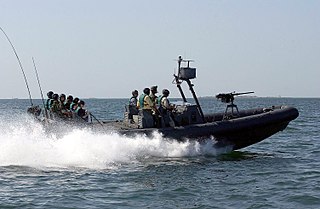 W
WThe Caspian Guard Initiative is a United States Department of Defense regional security program. The program is designed to coordinate activities in Azerbaijan and Kazakhstan with those of U.S. Central Command and other U.S government agencies to enhance Caspian Sea security. The program is officially described as assisting the two countries in improving their ability to prevent and, if needed, respond to terrorism, nuclear proliferation, drug and human trafficking, and other transnational threats in the Caspian region. United States European Command is responsible for operations in Azerbaijan.
 W
WThe Commander of the Air Force Office of Special Investigations (AFOSI/CC) heads the United States Air Force Office of Special Investigations and derives its independent criminal investigative authority directly from the Secretary of the Air Force. AFOSI is also a field operating agency under the administrative guidance and oversight of the Inspector General of the Air Force.
 W
WEach year the United States Congress passes a Federal Budget detailing where federal tax money will be spent in the coming fiscal year. The budget is broken down into various Budget Activity Groups (BAG). Below is a breakdown of the Defense Health Program (DHP) Budget Activity Group.
 W
WThe Defense Information Systems Agency (DISA), known as the Defense Communications Agency (DCA) until 1991, is a United States Department of Defense (DoD) combat support agency composed of military, federal civilians, and contractors. DISA provides information technology (IT) and communications support to the President, Vice President, Secretary of Defense, the military services, the combatant commands, and any individual or system contributing to the defense of the United States.
 W
WThe Defense Officer Personnel Management Act (DOPMA) is a United States federal law passed in 1980 that for the first time standardized officer personnel management across the United States Armed Forces. It established ceilings on the number of field grade officers authorized to each service, created uniform regulations governing promotions, and codified rules regarding separation and retirement of officers.
 W
WThe Defense Production Act of 1950 is a United States federal law enacted on September 8, 1950 in response to the start of the Korean War. It was part of a broad civil defense and war mobilization effort in the context of the Cold War. Its implementing regulations, the Defense Priorities and Allocation System (DPAS), are located at 15 CFR §§700 to 700.93. Since 1950, the Act has been reauthorized over 50 times. It has been periodically amended and remains in force.
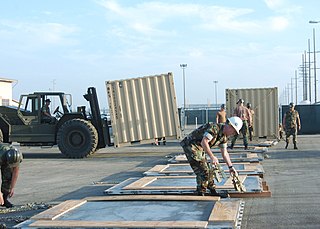 W
WThe Department of Defense container system comprises all U.S. Department of Defense-owned, leased, and controlled 20- or 40-foot intermodal ISO intermodal containers and flatracks, supporting equipment such as generator sets and chassis, container handling equipment, information systems, and other infrastructure that supports DOD transportation and logistic operations, including commercially provided transportation services. This also includes 463L pallets, unit loads, ULDs, nets, and tie down equipment as integral components of the DOD Intermodal Container System.
 W
WThe Department of Defense master clock is the atomic master clock to which time and frequency measurements for the United States Department of Defense are referenced.
 W
WThe Department of Defense Serum Repository is a biological repository operated by the United States Department of Defense containing over 50,000,000 human serum specimens, collected primarily from applicants to and members of the United States Uniformed Services.
 W
WDoD News Channel was a television channel broadcasting military news and information for the 2.6 million members of the U.S. Armed Forces. It was widely available in the United States as a standalone television channel, or as part of programming on local PEG cable television channels. It could be viewed FTA in most Central and Western European countries, Africa, the Americas and most of Asia via satellite, and globally via the Internet. DoD News Channel was free, in the public domain, and accessible 24/7 to all U.S. cable and satellite providers.
 W
WDODGE was a satellite whose primary purpose was to conduct experiments in gravity-gradient stabilization at near-geosynchronous altitudes. Its secondary objectives included measuring the Earth's magnetic field, and taking pictures of the entire Earth's disk in both black-and-white and color. It was launched atop a Titan IIIC rocket on July 1, 1967, and operated for over three years. DODGE carried ten knobbed booms oriented along three different axes, that could be independently extended and retracted by ground command.
 W
WEmployer Support of the Guard and Reserve (ESGR) is the lead U.S. Defense Department program promoting cooperation and understanding between civilian employers and their National Guard and Reserve employees. Established in 1972, ESGR operates within the Office of the Assistant Secretary of Defense for Reserve Affairs. ESGR develops and promotes supportive work environments for service members in the Reserve Components through outreach, recognition, and educational opportunities that increase awareness of applicable laws and resolves employer conflicts between the service members and their employers.
 W
WThe United States Department of Defense is one of the largest single consumers of energy in the world, responsible for 93% of all US government fuel consumption in 2007 (Air Force: 52%; Navy: 33%; Army: 7%. Other DoD: 1%). In FY 2006, the DoD used almost 30,000 gigawatt hours (GWH) of electricity, at a cost of almost $2.2 billion. The DoD's electricity use would supply enough electricity to power more than 2.3 million average American homes. In electricity consumption, if it were a country, the DoD would rank 58th in the world, using slightly less than Denmark and slightly more than Syria (CIA World Factbook, 2006). The Department of Defense uses 4,600,000,000 US gallons (1.7×1010 L) of fuel annually, an average of 12,600,000 US gallons (48,000,000 L) of fuel per day. A large Army division may use about 6,000 US gallons (23,000 L) per day. According to the 2005 CIA World Factbook, if it were a country, the DoD would rank 34th in the world in average daily oil use, coming in just behind Iraq and just ahead of Sweden.
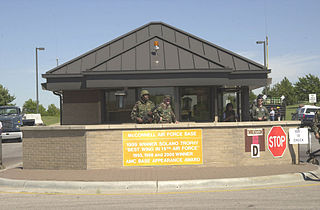 W
WIn United States military security parlance, force protection condition is a counter-terrorist threat system overseen by the United States Department of Defense directive, and describes the number of measures needed to be taken by security agencies in response to various levels of terrorist threats against military facilities, as opposed to DEFCON, which assesses the amount of military forces needed to be deployed in a situation with a certain likelihood of attack against the civilian population. The decision on what level of FPCON to implement is affected by the current threat of terrorism towards military facilities and personnel, the amount of security forces available, and current relationships between the United States and the world, which may affect the chances of an attack. FPCON was previously known as THREATCON, until it was renamed in June 2001 due to confusion with United States State Department system of threat assessment.
 W
WThe Joint Improvised-Threat Defeat Organization (JIDO) was a combat support organization of the U.S. Department of Defense (DoD) organization under the Defense Threat Reduction Agency (DTRA) that deals with improvised threats such as the improvised explosive device (IEDs) and small unmanned aerial systems (sUASs). JIDO was born from the Joint IED Defeat Organization (JIEDDO) established in 2006, which focused on IEDs. JIDO's mission is to "enable Department of Defense actions to counter improvised threats with tactical responsiveness and anticipatory acquisition in support of combatant commanders' efforts to prepare for, and adapt to, battlefield surprise." This mission supports counter-terrorism, counter-insurgency and other related mission areas including Counter-IED.
 W
WThe Joint Worldwide Intelligence Communications System, is a Top Secret/SCI network run by the United States' Defense Intelligence Agency and used across the Department of Defense, Department of State, Department of Homeland Security and Department of Justice to transmit especially sensitive classified information.
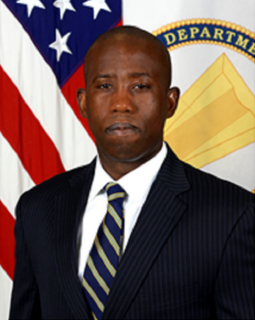 W
WEarl G. Matthews is an American government official and attorney who held senior positions within the Department of the Army and at the White House during the administration of President Donald J. Trump. Matthews was a member of Trump's Department of Defense transition team and was appointed as a Special Assistant to the Secretary of Defense, James N. Mattis on January 20, 2017. Matthews was subsequently appointed as the Principal Deputy General Counsel of the Army on June 21, 2019. He served as Acting General Counsel of the Army from June 21, 2017 until James E. McPherson was sworn in as General Counsel on January 2, 2018.
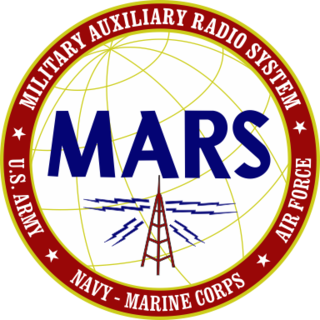 W
WThe Military Auxiliary Radio System (MARS) is a United States Department of Defense sponsored program, established as a separately managed and operated program by the United States Army, and the United States Air Force. The United States Navy-Marine Corps program closed in 2015. The program is a civilian auxiliary consisting primarily of licensed amateur radio operators who are interested in assisting the military with communications on a regional and national level when access to traditional forms of communication may no longer be available. The MARS programs also include active duty, reserve, and National Guard units; and Navy, Marine Corps units.
 W
WThe Military Health System (MHS) is the enterprise within the United States Department of Defense that provides health care to active duty, Reserve component and retired U.S. Military personnel and their dependents.
 W
WThe Minerva Initiative is a research program sponsored by the U.S. Department of Defense (DoD) that provides grants to sustain university-based, social science studies on areas of strategic importance to U.S. national security policy. The program looks to tap into the community of area specialists and other university researchers, particularly those who work on Islam, Iraq, China, and related areas. Since its establishment in 2008, the Department of Defense has awarded over 70 grants to private researchers. Grants are awarded on an annual basis for research projects that typically last three years.
 W
WThe Mitre Corporation is an American not-for-profit organization based in Bedford, Massachusetts, and McLean, Virginia. It manages federally funded research and development centers (FFRDCs) supporting several U.S. government agencies.
 W
WMultijurisdictional Counterdrug Task Force Training (MCTFT) is a United States Department of Defense program managed by the National Guard that provides unique, tuition-free military and counterdrug training for local, state, federal, and military criminal justice professionals as well as awareness training for community leaders. The MCTFT program is funded by the Department of Defense and administered through the Florida National Guard, and exists to fulfill the counterdrug training needs of law enforcement personnel. Nationally responsive, the program meets the training needs of all 50 U.S. states and four U.S. territories.
 W
WThe National Security Language Initiative (NSLI) is a program introduced by United States President George W. Bush on January 5, 2006 at the U.S. University President's Summit to develop the foreign language skills of American students, especially in "critical-need" foreign languages such as Arabic, Chinese, Russian, Hindi, and Persian. The initiative was given $114 million in fiscal year 2007 and $26.6 million in 2008 to expand programs from kindergarten level to universities. Schools were additionally awarded $750 million for critical language education.
 W
WA NATO Stock Number, or National Stock Number (NSN) as it is known in the US and UK, is a 13-digit numeric code, identifying all the 'standardized material items of supply' as they have been recognized by all NATO countries including United States Department of Defense. Pursuant to the NATO Standardization Agreements, the NSN has come to be used in all treaty countries. However, many countries that use the NSN program are not members of NATO. A two-digit Material Management Aggregation Code (MMAC) suffix may also be appended, to denote asset end use but it is not considered part of the NSN. In the United Kingdom it is known as a Domestic Management Code (DMC).
 W
WThe K. Mark Takai Pacific Warfighting Center is located on Ford Island in Honolulu, Hawaii within the Ford Island Historic Management Zone / Aviation Facilities Sub-Area, part of the Pearl Harbor National Historic Landmark. This building, formerly called The Pacific Warfighting Center (PWC), is primarily used to direct forces during disaster relief efforts as needed within the United States Indo-Pacific Command (USINDOPACOM).
 W
WThe President's Blue Ribbon Commission on Defense Management, informally known as the Packard Commission, was a federal government commission by President Ronald Reagan, created by Executive Order 12526 to study several areas of management functionality within the US Department of Defense. The commission was chaired by David Packard.
 W
WThe Pentagon military analyst program was a propaganda campaign of the U.S. Department of Defense (DoD) that was launched in early 2002 by then-Assistant Secretary of Defense for Public Affairs Victoria Clarke. The goal of the operation is "to spread the administrations's talking points on Iraq by briefing retired commanders for network and cable television appearances," where they have been presented as independent analysts; A Pentagon spokesman said the Pentagon's intent is to keep the American people informed about the so-called War on Terrorism by providing prominent military analysts with factual information and frequent, direct access to key military officials. The Times article suggests that the analysts had undisclosed financial conflicts of interest and were given special access as a reward for promoting the administration's point of view. On 28 April 2008, the Pentagon ended the operation. A DoD Inspector General investigation found no wrongdoing on the part of the DoD.
 W
WA premier ensemble is a certain class of military band in the United States armed forces that exist to promote the U.S. military to the public at large, to support state ceremonies, and to preserve the heritage of American martial music. They are configured and commanded so as to attract the highest-quality musicians available, and competition for enlistment is typically fierce. As of 2020 there are eleven such units.
 W
WProject Camelot was the code name of a counterinsurgency study begun by the United States Army in 1964. The full name of the project was Methods for Predicting and Influencing Social Change and Internal War Potential. The project was executed by the Special Operations Research Office (SORO) at American University, which assembled an eclectic team of psychologists, sociologists, anthropologists, economists, and other intellectuals to analyze the society and culture of numerous target countries, especially in Latin America.
 W
WRAND Corporation is an American nonprofit global policy think tank created in 1948 by Douglas Aircraft Company to offer research and analysis to the United States Armed Forces. It is financed by the U.S. government and private endowment, corporations, universities and private individuals. The company has grown to assist other governments, international organizations, private companies and foundations, with a host of defense and non-defense issues, including healthcare. RAND aims for interdisciplinary and quantitative problem solving by translating theoretical concepts from formal economics and the physical sciences into novel applications in other areas, using applied science and operations research.
 W
WTricare, formerly known as the Civilian Health and Medical Program of the Uniformed Services (CHAMPUS), is a health care program of the United States Department of Defense Military Health System. Tricare provides civilian health benefits for U.S Armed Forces military personnel, military retirees, and their dependents, including some members of the Reserve Component. Tricare is the civilian care component of the Military Health System, although historically it also included health care delivered in military medical treatment facilities.
 W
WA United States Uniformed Services Privilege and Identification Card is an identity document issued by the United States Department of Defense to identify a person as a member of the Armed Forces or a member's dependent, such as a child or spouse.
 W
WThe United States Air Force (USAF) is the atmospheric service branch of the United States Armed Forces. It is one of the eight U.S. uniformed services. Initially formed as a part of the United States Army on 1 August 1907, the USAF was established as a separate branch of the U.S. Armed Forces on 18 September 1947 with the passing of the National Security Act of 1947. It is the second youngest branch of the U.S. Armed Forces and the fourth in order of precedence. The U.S. Air Force articulates its core missions as air superiority, global integrated intelligence, surveillance and reconnaissance, rapid global mobility, global strike, and command and control.
 W
WThe United States Department of the Air Force (DAF) is one of the three military departments within the Department of Defense of the United States of America. The Department of the Air Force was formed on September 18, 1947, per the National Security Act of 1947 and it includes all elements and units of the United States Air Force (USAF) and the United States Space Force (USSF).
 W
WThe United States Department of the Army (DA) is one of the three military departments within the Department of Defense of the United States of America. The Department of the Army is the federal government agency within which the United States Army (USA) is organized, and it is led by the secretary of the Army, who has statutory authority under 10 U.S.C. § 3013 to conduct its affairs and to prescribe regulations for its government, subject to the limits of the law, and the directions of the secretary of defense and the president.
 W
WThe United States Department of the Navy (DN) is one of the three military departments within the Department of Defense of the United States of America. The Department of the Navy was established by an Act of Congress on 30 April 1798, to provide a government organizational structure to the United States Navy (USN), the United States Marine Corps (USMC) and, when directed by the President, the United States Coast Guard (USCG), as a service within the Department of the Navy, though each remain independent service branches. The Department of the Navy was an Executive Department and the Secretary of the Navy was a member of the President's cabinet until 1949, when amendments to the National Security Act of 1947 changed the name of the National Military Establishment to the Department of Defense and made it an Executive Department. The Department of the Navy then became, along with the Department of the Army and Department of the Air Force, a Military Department within the Department of Defense: subject to the authority, direction and control of the Secretary of Defense.
 W
WThe Warrior Games is a multi-sport event for wounded, injured or ill service personnel and veterans organized by the United States Department of Defense (DoD).
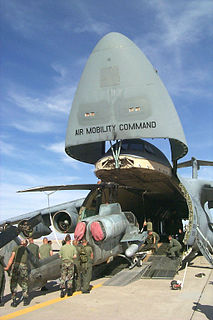 W
WThe Department of Defense Whistleblower Program in the United States is a whistleblower protection program within the U.S. Department of Defense (DoD) whereby DoD personnel are trained on whistleblower rights. The Inspector General's commitment fulfills, in part, the federal mandate to protect whistleblowers. It also administers the Defense Intelligence Community Whistleblower Protection Program (DICWP), as a sub-mission for the intelligence community. The Inspector General's Defense Criminal Investigative Service also conducts criminal investigations which rely, in part, on Qui Tam relators.
 W
WHuffman v. Office of Personnel Management, 263 F.3d 1341 is a decision by the United States Court of Appeals for the Federal Circuit addressing a two decade-old conflict between the United States Congress and the U.S. Court of Appeals for the Federal Circuit over the depth of whistleblower protection available to federal civilian employees covered by the Whistleblower Protection Act of 1989. The discourse revolves around the meaning of the word 'any'.
 W
WThe Yellow Ribbon Reintegration Program (YRRP) is a United States Department of Defense (DoD) effort to promote the well-being of National Guard and Reserve members, their families and communities, by connecting them with resources throughout the deployment cycle. Congress directed the Secretary of Defense to establish the YRRP in 2008 in Section 582 as part of Public Law (PL) 110-181 in direct response to the Nation's recognition of the challenges facing the Reserve Component community. Since 2008, YRRP has served more than 1.4 million Service members and their families. The Yellow Ribbon Reintegration Program is aligned under the Family and Employer Programs and Policy Office within the Office of the Assistant Secretary of Defense for Manpower and Reserve Affairs.